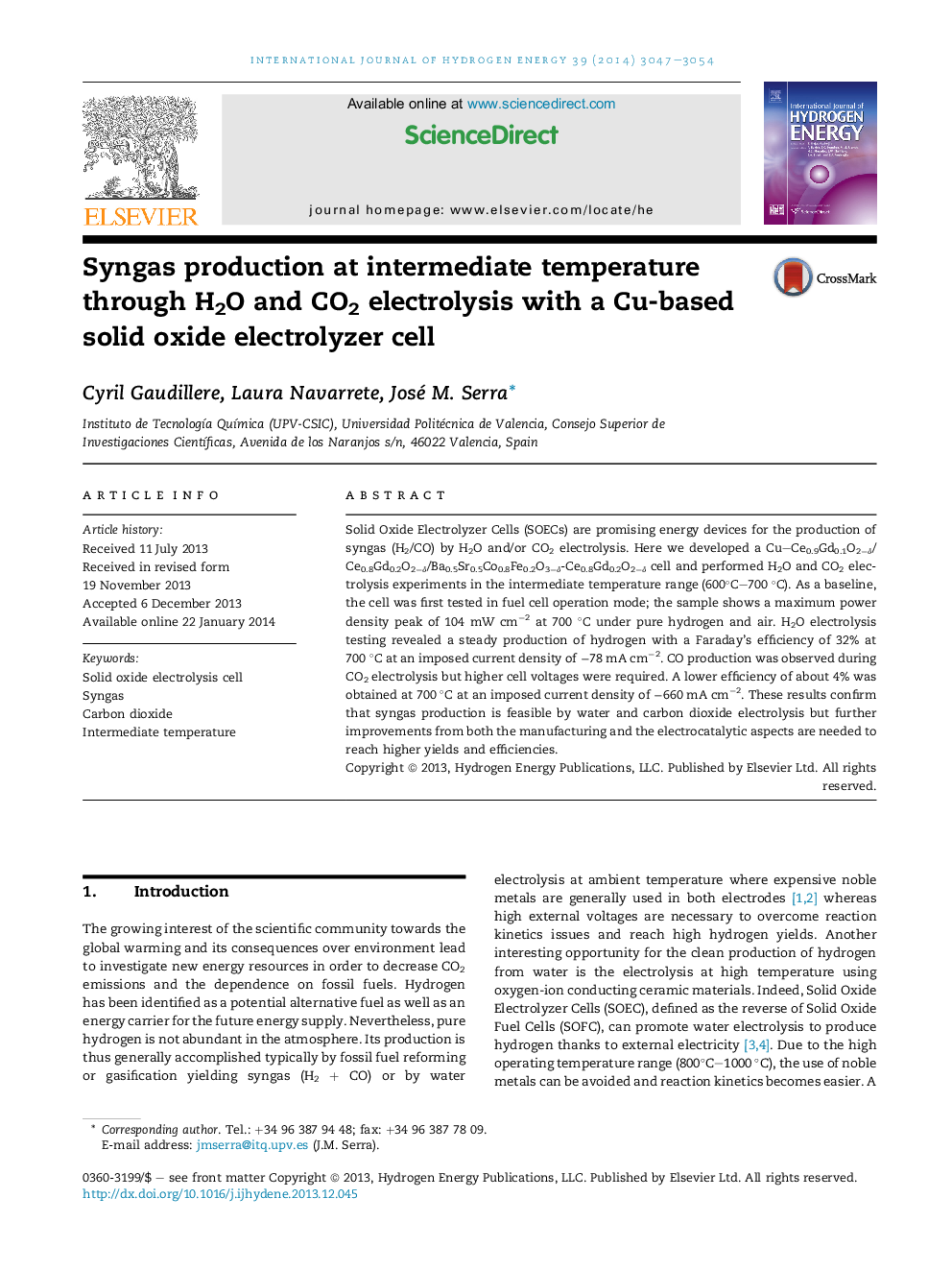| Article ID | Journal | Published Year | Pages | File Type |
|---|---|---|---|---|
| 1270609 | International Journal of Hydrogen Energy | 2014 | 8 Pages |
•Cu–Ce0.9Gd0.1O2−δ fuel electrodes were elaborated by one-pot sol–gel synthesis.•Ba0.5Sr0.5Co0.8Fe0.2O3−δ-Ce0.8Gd0.2O2−δ composite was used as oxygen electrode.•H2O and CO2 electrolysis is feasible, achieving overpotential values below 0.6 V at 0.4 A/cm2 and 700 °C.•Faradic efficiency is apparently limited by current leakages in the electrolyte.•Coke formation is not detected after CO2 electrolysis.
Solid Oxide Electrolyzer Cells (SOECs) are promising energy devices for the production of syngas (H2/CO) by H2O and/or CO2 electrolysis. Here we developed a Cu–Ce0.9Gd0.1O2−δ/Ce0.8Gd0.2O2−δ/Ba0.5Sr0.5Co0.8Fe0.2O3−δ-Ce0.8Gd0.2O2−δ cell and performed H2O and CO2 electrolysis experiments in the intermediate temperature range (600°C–700 °C). As a baseline, the cell was first tested in fuel cell operation mode; the sample shows a maximum power density peak of 104 mW cm−2 at 700 °C under pure hydrogen and air. H2O electrolysis testing revealed a steady production of hydrogen with a Faraday's efficiency of 32% at 700 °C at an imposed current density of −78 mA cm−2. CO production was observed during CO2 electrolysis but higher cell voltages were required. A lower efficiency of about 4% was obtained at 700 °C at an imposed current density of −660 mA cm−2. These results confirm that syngas production is feasible by water and carbon dioxide electrolysis but further improvements from both the manufacturing and the electrocatalytic aspects are needed to reach higher yields and efficiencies.
Graphical abstractFigure optionsDownload full-size imageDownload as PowerPoint slide
